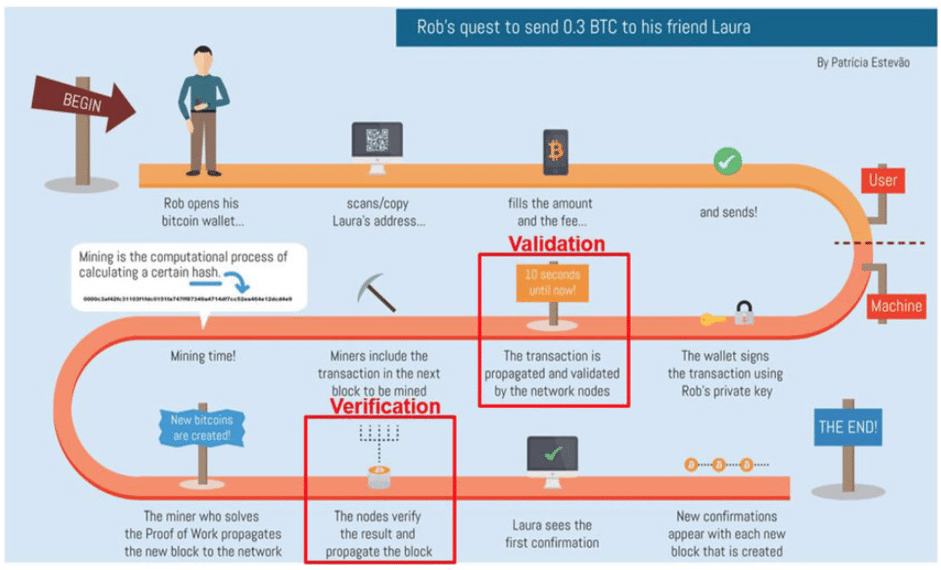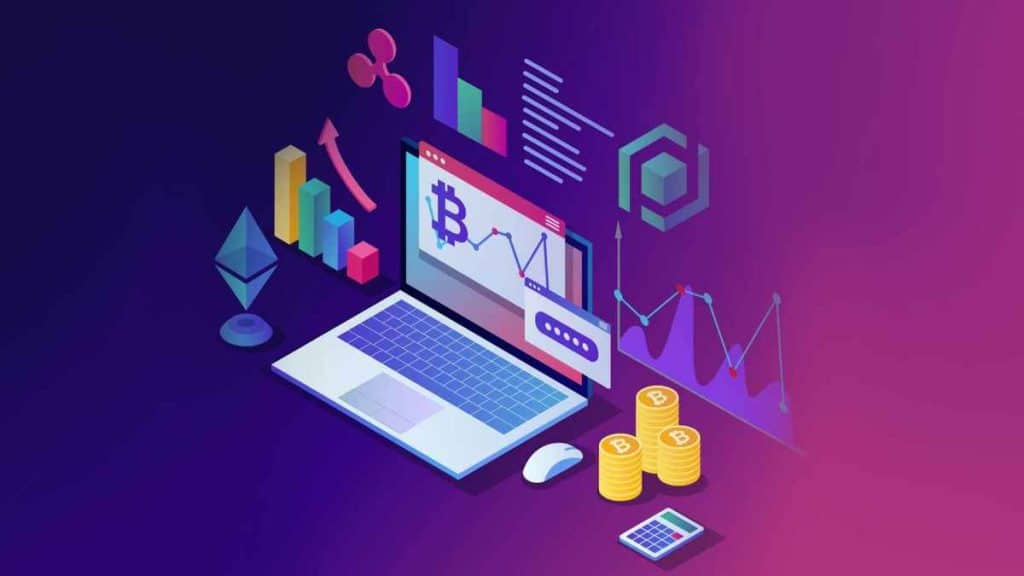In the world of blockchain technology, there are a number of terms that are thrown around quite frequently. Those who are new to the space might find it difficult to understand them all at first. One such term is “node”.
Nodes are essentially computers or servers that run blockchain software and store a copy of the blockchain ledger on their hard drive. They also help validate transactions by solving complex mathematical problems. This process is known as mining. In return for their services, nodes receive rewards in the form of cryptocurrency tokens or transaction fees paid by other users for their services.
Let’s begin with understanding blockchain and how it’s related to the nodes.
A blockchain is a decentralized computer network that works together to complete and verify transactions. The blockchain network is made up of individual nodes, which are computers that are connected to the blockchain network. These nodes store information about the transactions on the blockchain.
The network works as a distributed ledger system, where all users have a copy of every transaction ever made on that coin’s blockchain. This means that if someone tries to hack into your account and change some data in your wallet, other users will immediately know about it because they have access to your wallet’s private key, which allows them to see any changes made to it by third parties outside of you or the person you sent funds too.
Rather, nodes can be seen as a wallet, but instead of being stored on your system, it’s stored on a network of systems worldwide that all have access to this information.
Now let’s understand how Nodes work!
When you make a transaction in cryptocurrency, it gets sent from one node to another until it reaches its intended destination. This process is called ‘mining’ because it’s similar to how physical gold is mined from the ground. Miners verify each transaction by solving complex mathematical equations with their hardware (CPUs, GPUs or ASICs), which validates each block of transactions and adds them to an ever-growing chain (ledger). Compared to CPU and GPU, ASIC miners are more efficient for mining cryptocurrency. ASIC miners are specialized crypto mining hardware devices designed specifically for mining cryptocurrencies like Bitcoin, Ethereum, etc. Cryptominers often buy, sell and trade ASIC miners in an ecosystem, which is popularly known as the ASIC marketplace.
Nodes play an important role in maintaining the integrity of a cryptocurrency network. They help validate new transactions and add them to their copy of the blockchain by solving complex mathematical problems. Nodes also check other nodes’ work to ensure they are not trying to cheat or double-spend coins. This ensures that multiple parties validate all transactions on a cryptocurrency network before being added to the ledger (blockchain).
In order for cryptocurrency users to send coins from one user to another, they must first broadcast a transaction with the details of their transaction (amount sent, recipient address etc.). When this transaction gets sent over the internet, it is sent out as data packets called “packets”. Suppose any packet gets lost in transit or corrupted, in that case, it will be re-sent automatically until it arrives at its destination properly intact and verified by miners in that block as being valid and legitimate.

Why are Blockchain nodes important?
Blockchain nodes are needed because they provide the backbone of the network. They allow you to participate in mining, and they help verify transactions on the network. The blockchain is a distributed ledger of transactions, so if there’s no one to verify those transactions, it’s impossible to track who owns what. For example, if you’re using bitcoin, it doesn’t really matter how many bitcoins you have as long as someone else agrees that they belong to you — but it matters a lot if no one agrees that they belong to you and all of your transactions are invalid.
In order to solve this problem, Satoshi Nakamoto introduced the idea of proof-of-work (PoW) mining in his 2008 white paper. Mining involves solving complex computational problems in order to write new blocks of data onto the blockchain — but only miners with powerful computers can do this effectively. This ensures that miners don’t flood the network with fake transactions or double-spend coins (which would be problematic because it would mean that anyone could spend money more than once). It also ensures that miners are incentivised to keep mining because if they stop mining, their rewards will decrease over time due to competition from other miners who continue mining for rewards and transaction fees.
What are the different types of Blockchain Nodes?
- [1] Full Nodes: These are the most important type of blockchain network nodes. Full Nodes store the entire history of transactions and blocks in the system, meaning they have an exact copy of the whole blockchain. It is very important to have as many full nodes as possible because they help validate transactions as well as maintain consensus on a distributed ledger.
These are split into-
- Pruning Nodes: These nodes do not store all information about every single transaction ever made on the network; instead, they only store information about recent transactions (such as those within the past few days) and rely on other full nodes for older ones that may have been pruned from their memory pools due to lack of space or other reasons).
- Archival Nodes are used to verify and store the entire blockchain in a single node. They need more storage and bandwidth than other nodes but also have the highest level of trust in the network.
The Archival Nodes are further split into-
- Master Nodes: These nodes are the ones that determine the order in which new blocks are added to the chain. They also verify transactions before they are added to the blockchain. In other words, this is the most important part of the blockchain.
- Mining Nodes: These are responsible for mining new blocks and confirming transactions. Mining nodes get paid by users who want their transactions to be confirmed faster through mining fees. The mining fee is the cost that users pay when they send funds to another wallet address on the network. The higher your mining fee, the more likely it will get mined first by miners.
- Authority Nodes: They verify blocks mined by mining nodes before they’re added to the blockchain. This ensures that each transaction has been recorded correctly on a particular block before it gets added to the chain. Authority nodes also contribute towards consensus on changes made in any aspect of your blockchain, such as security or functionalities of smart contracts etc.
- Lightweight Nodes: Lightweight nodes do not store an entire copy of the blockchain but only download recent blocks along with their header information and indices. They also connect to other full nodes for transaction confirmation before relaying messages to other nodes on the network. Lightweight nodes, therefore, help reduce traffic load on the network by offloading tasks from full nodes and are usually run by users who wish to track payments between addresses without having to download all blocks from the beginning of time (or at least until a particular date).
- P2P Network: P2P networks allow direct communication between peers without going through a centralized server that houses all data required by these peers. This can be done using protocols such as BitTorrent or Kademlia DHT (Distributed Hash Table).
How can you become a Node?
If you want to become a node yourself, you need to download and install a full copy of the blockchain onto your computer. This takes up a lot of disk space (the current blockchain is over 444.41GB {stats based on https://ycharts.com/indicators/reports/bitcoin_statistics}), but it allows you to participate in mining and help secure the network.
Conclusion
Blockchain technology is creating a new, powerful framework that is beginning to make waves in virtually every industry in the world. As public awareness grows and its potential has been tested in live trials and experiments, it will be increasingly exciting to see where this industry goes and how it continues to grow.
These decentralized networks will likely form the backbone of the next generation of digital services, and they are sure to generate some incredible investment opportunities. We’ve just scratched the surface of their potential, and it’s up to us to determine how significant this trend will be. Does this technology represent a new revolution in data distribution? If we’re lucky, the answer is “Yes.”

